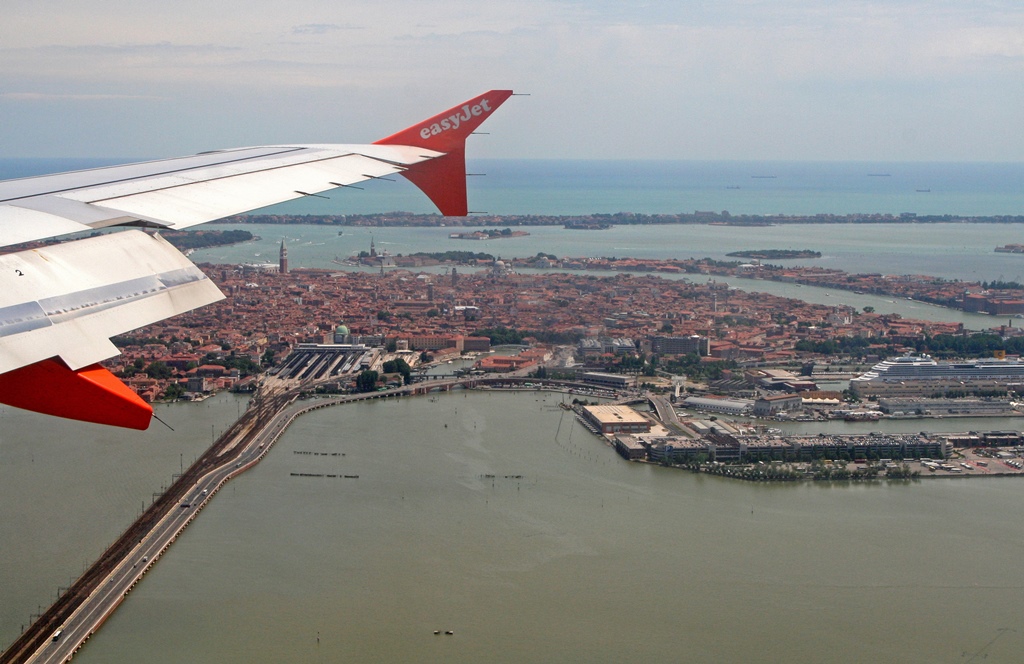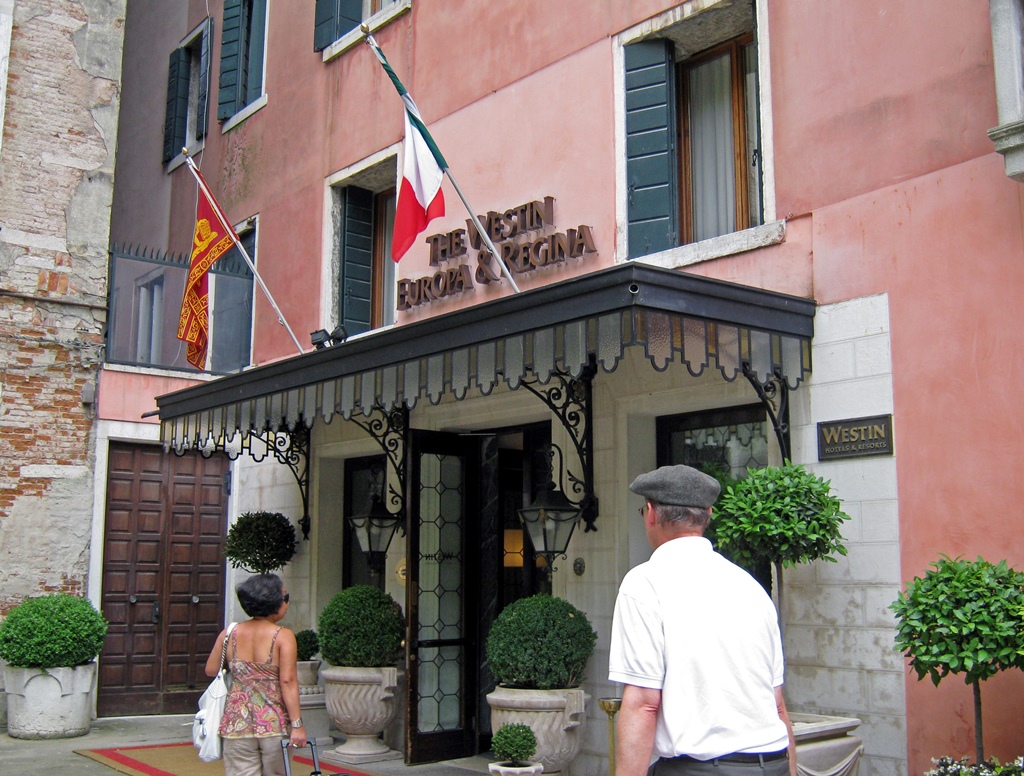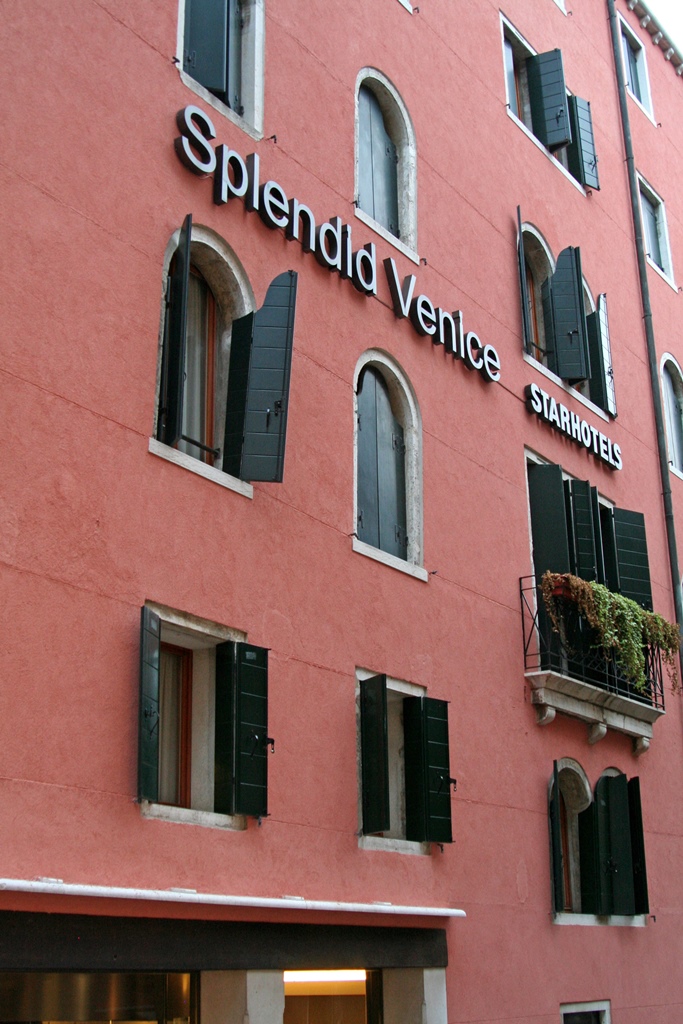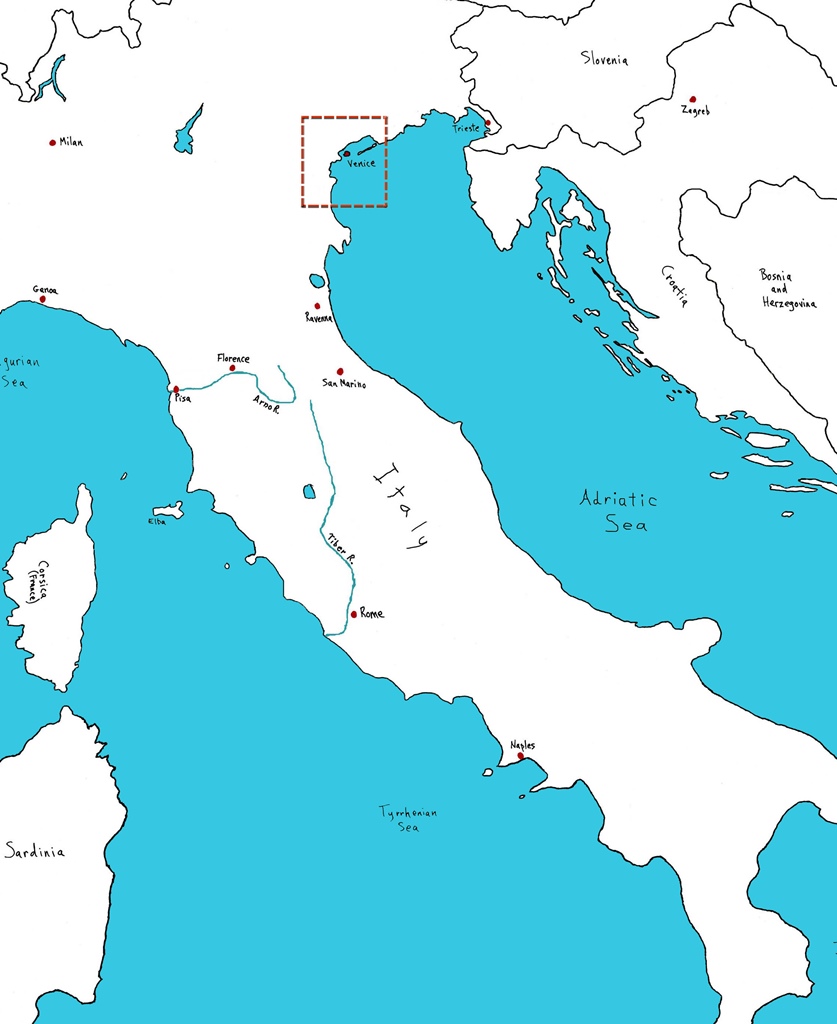
Venice on the Map
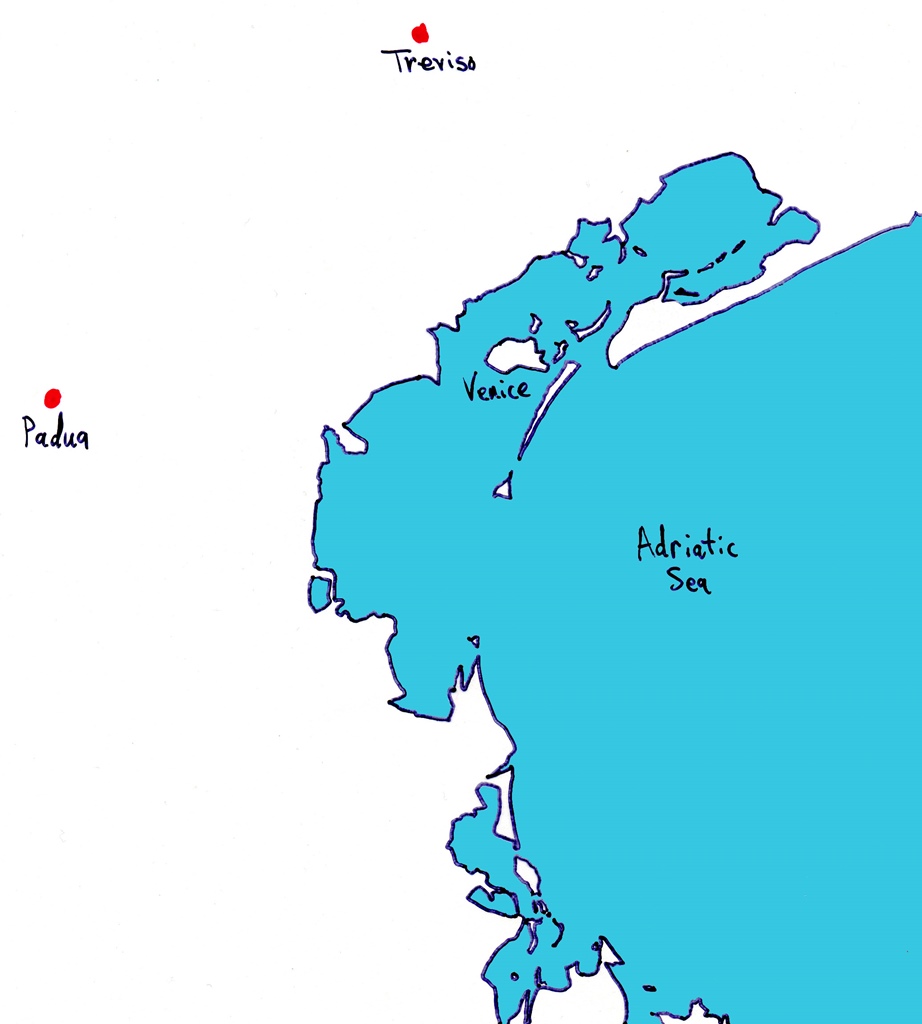
Around the Lagoon of Venice
Venice, of course, is the Italian city with the canals and the gondolas and the distinctive,
Byzantinish architecture. The city is technically comprised of many islands scattered across
the Lagoon of Venice, as well as a chunk of mainland, where most of the city's 270,000
residents live. But one principal island is the main focus of interest for tourists and
historians.
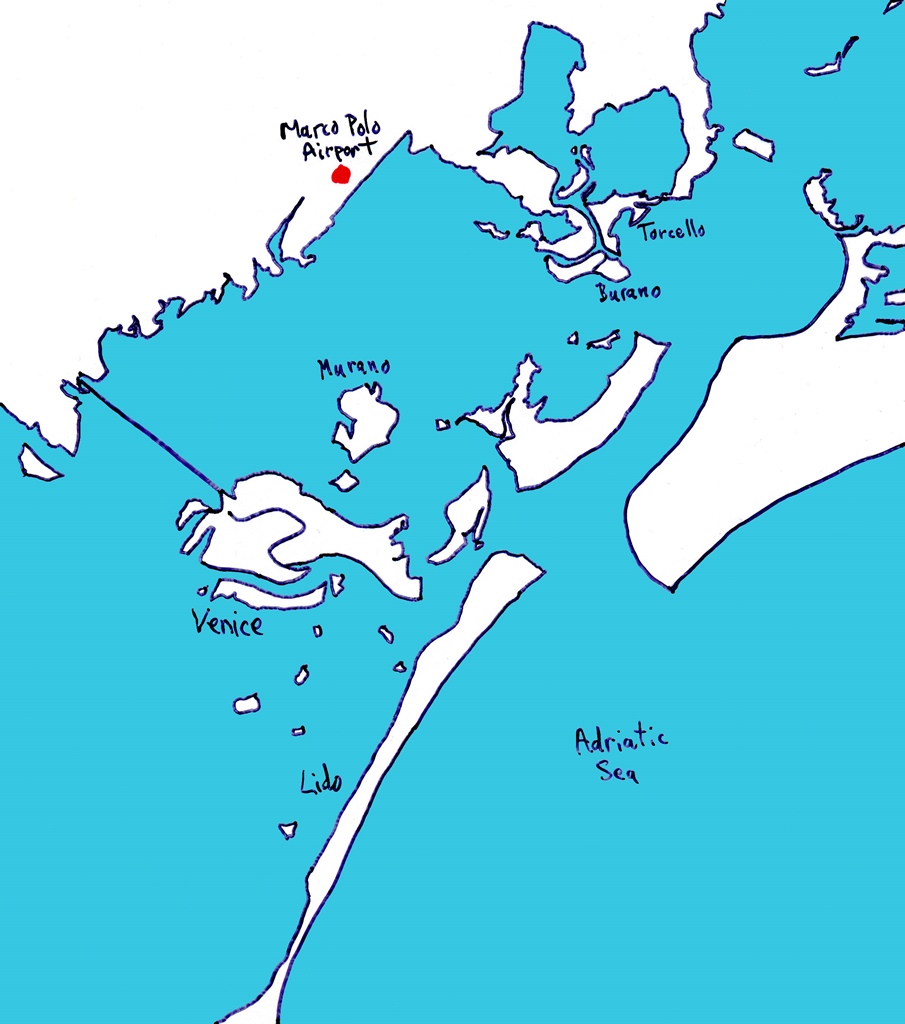
The Main Islands
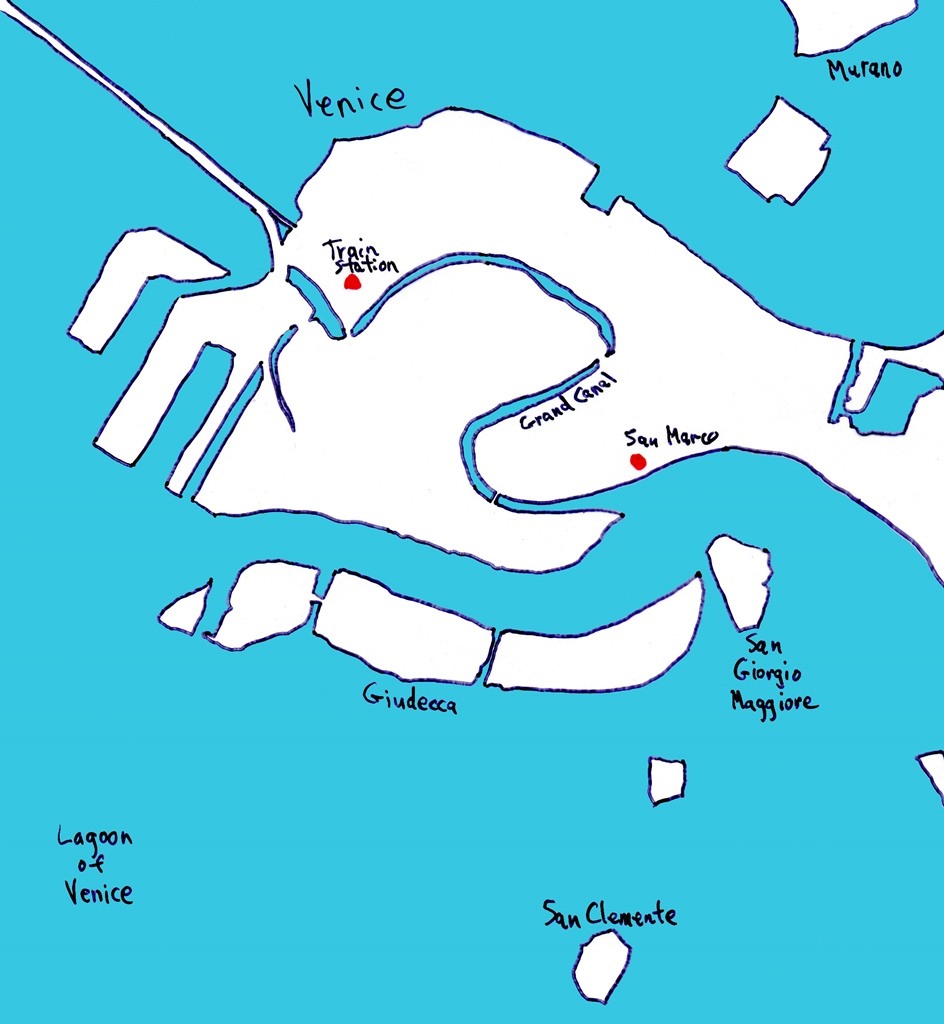
The Island of Venice
The beginnings of Venice are a little hazy, but the city was probably started by Roman
citizens seeking refuge from unwelcome visits by Huns and Germanic invaders. Venice became
its own city-state in the Middle Ages and eventually became very rich and powerful, thanks
to a strong navy and a strategic position which allowed it to control the central
Mediterranean Sea. The Venetian sphere of influence was an unavoidable waypoint for
Western Europeans travelling to Asia to trade, and much of the wealth resulting from that
commerce found its way into the city. Venice also participated in the 4th Crusade and
helped itself to a great deal of riches from Constantinople (now Istanbul) in 1204. All of
this wealth led to the construction of many opulent palazzos and churches on the main
island, most of which are still there. These buildings were built on top of many many
wooden pilings, largely logged from regions of modern-day Slovenia and Croatia which
remain deforested to this day.
Venice's monopoly on the Asia route was broken, however, when Vasco da Gama of Portugal
figured out how to get to Asia by sailing around Africa in the late 15th Century, and the
New World discoveries begun by Christopher Columbus further diluted interest in
travelling to Asia by way of the Mediterranean. Venice experienced a steady decline in
military and economic power beginning around this time, though its influence in culture
and the arts continued through the 18th Century. Venice lost its independence in 1797,
thanks to Napoleon Bonaparte, who later made it an Austrian possession. The city briefly
became independent again around the middle of the 19th Century, but joined the
newly-formed Kingdom of Italy in 1866.
We began our approach to Venice from a distance, with a relatively uneventful taxi ride
to the Aeroporto Internazionale di Napoli, where we boarded our inexpensive
easyJet flight. On taking off, we had a nice view of Mt. Vesuvius, marveling at the
density of civilization surrounding the killer volcano on all sides. One can only hope
that volcano science is sufficiently advanced at the time of the next eruption to give
ample warning to the residents, and that the residents at the time are smart enough to
pay attention.
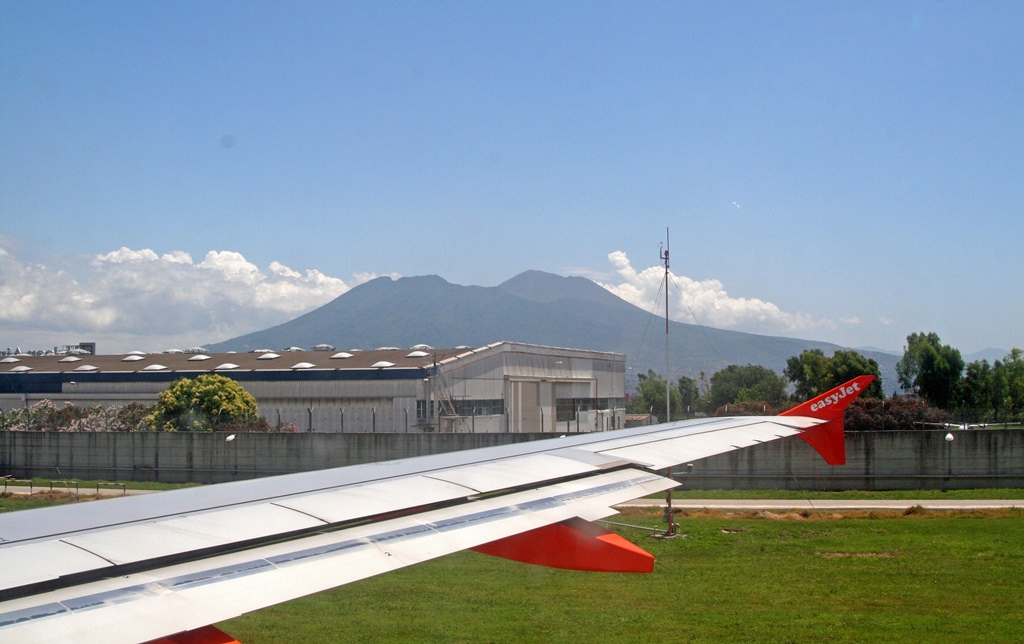
Mt. Vesuvius from Naples Airport
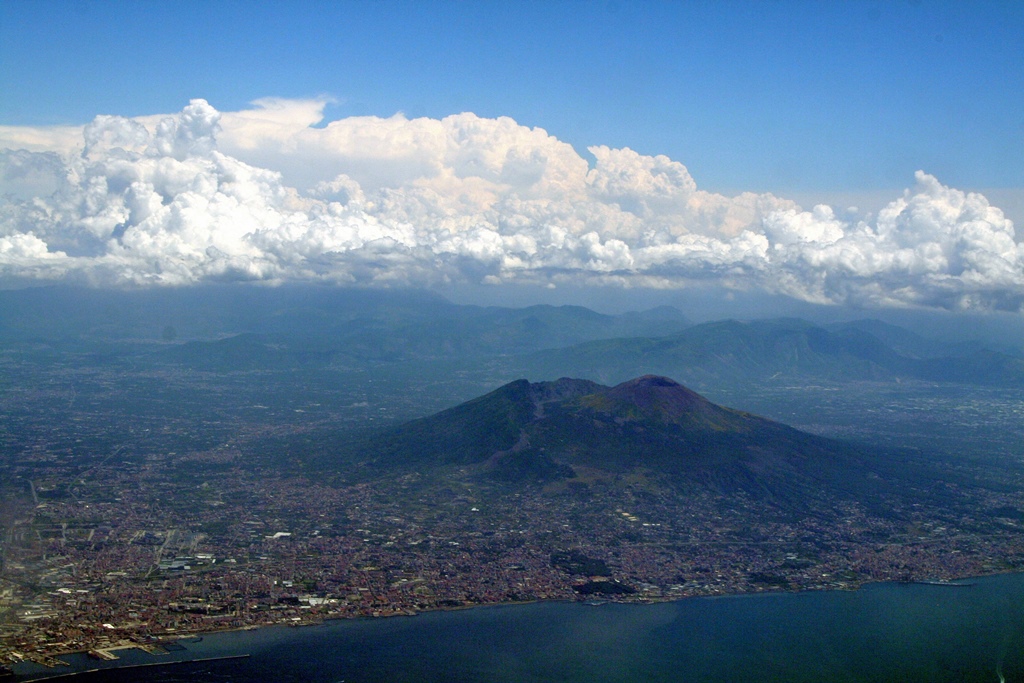
Mt. Vesuvius from the Air
The flight to Venice was a short one, taking just over an hour. We landed at Marco Polo
International Airport, located on the shore of the lagoon.
Venice and Bridge to Mainland
From the airport, one has a choice of a few ways to get to the main island. The island
is connected to the mainland by a single bridge which carries both auto and rail traffic.
The cheapest way to get to the island is to take a bus across the bridge to a drop-off
point near the train station. Unfortunately, beyond the train station, no vehicular
traffic is allowed on the island, and it's a long and confusing walk to the main points
of interest (including our hotel). But the island is cut roughly in half by the S-shaped
Grand Canal, and the island's "bus service", commuter boats called vaporetti,
travel regularly up and down this canal, making many stops along the way. At the
opposite extreme price-wise, one has the option of taking a water taxi from the airport
directly to a chosen location on the island (as long as it's on the canal). In between,
but not too much more expensive than the bus-vaporetto option, is a boat called
the Alilaguna, which travels directly from the airport to selected stops around
the lagoon. We opted for this choice, as it seemed like it would be less crowded and
less of a hassle than taking a bus and transferring ourselves and our luggage to a
vaporetto.
It takes a few minutes to walk to the shore from the airport terminal (to the left on
exiting the front of the building), and on reaching the water, water taxi signs and the
ticket kiosk for the Alilaguna are hard to miss. We bought our tickets and waited about
20 minutes before a boat arrived. We boarded the boat (luggage is left in a large pile
in the middle of the boat, near the driver) and found comfortable seating in the
enclosed area below. The route was roundabout, with stops at the islands of Murano and
Lido before eventual arrival at our destination, the San Marco stop on the main island.
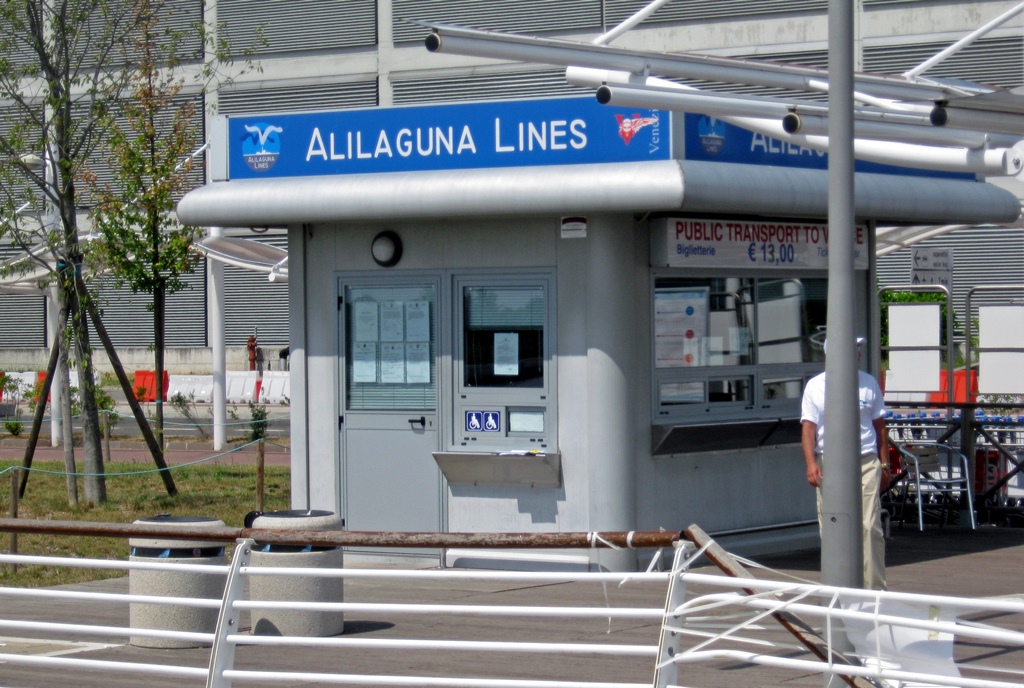
Alilaguna Ticket Booth
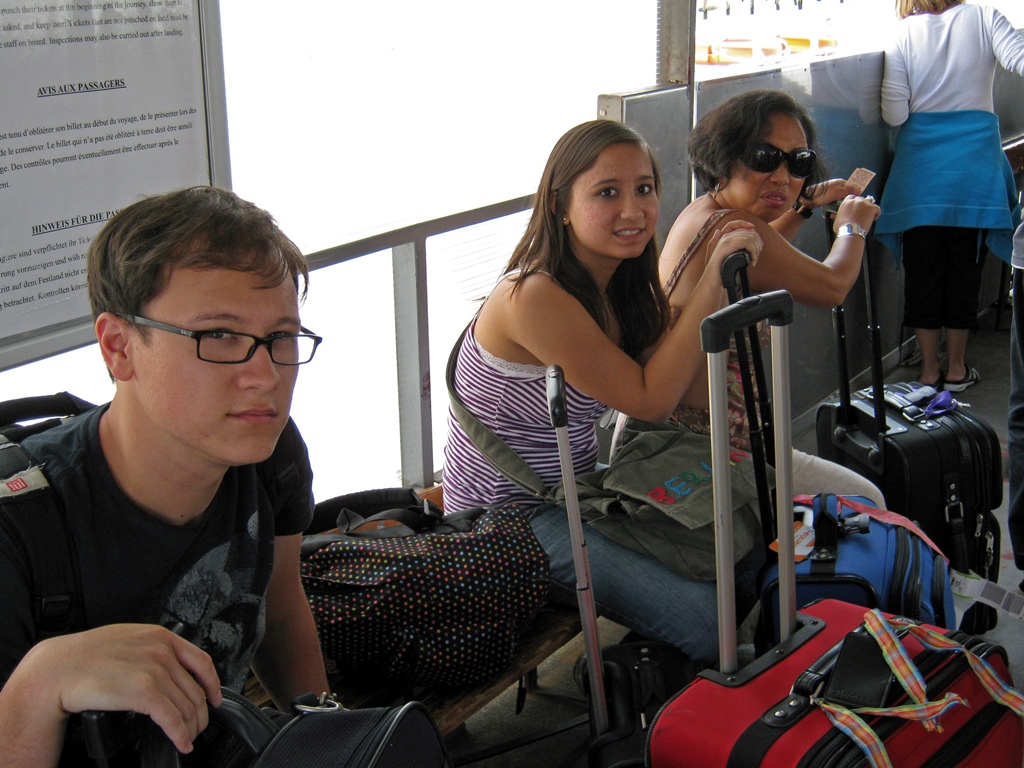
Waiting for the Boat
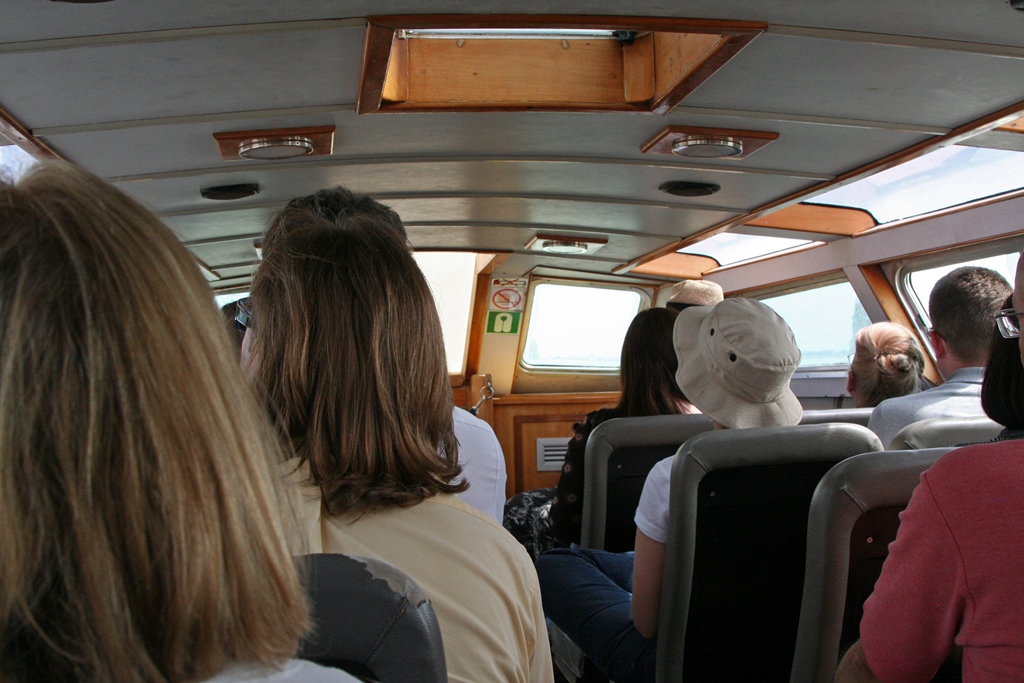
Inside the Boat
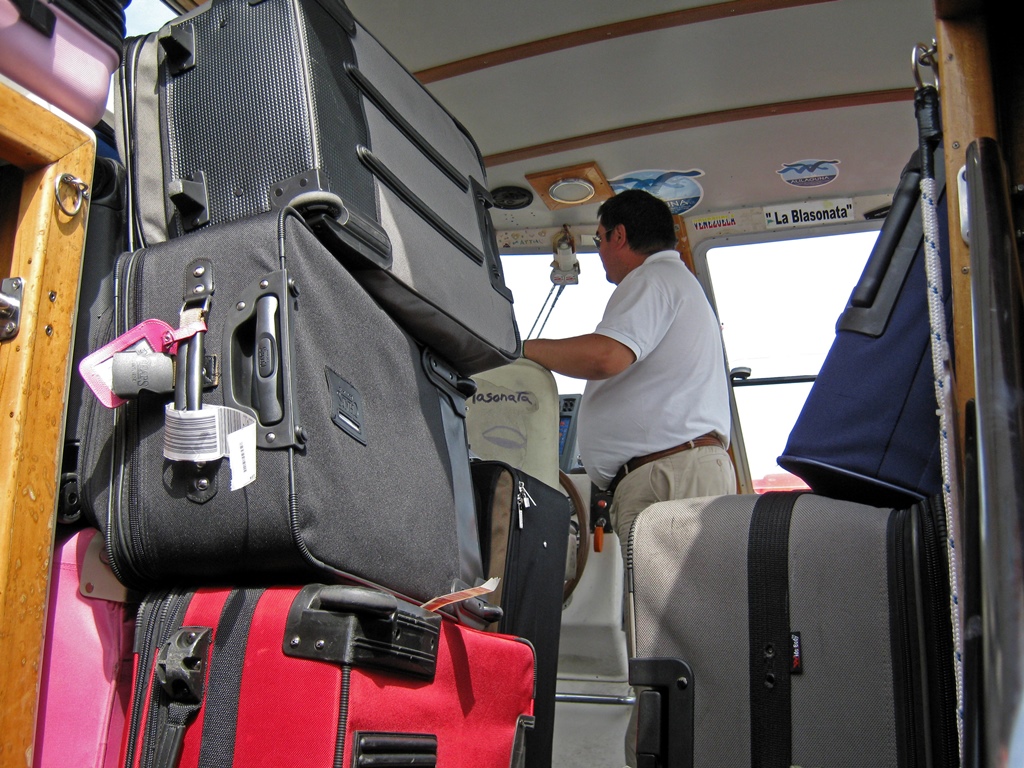
Pile-O-Luggage
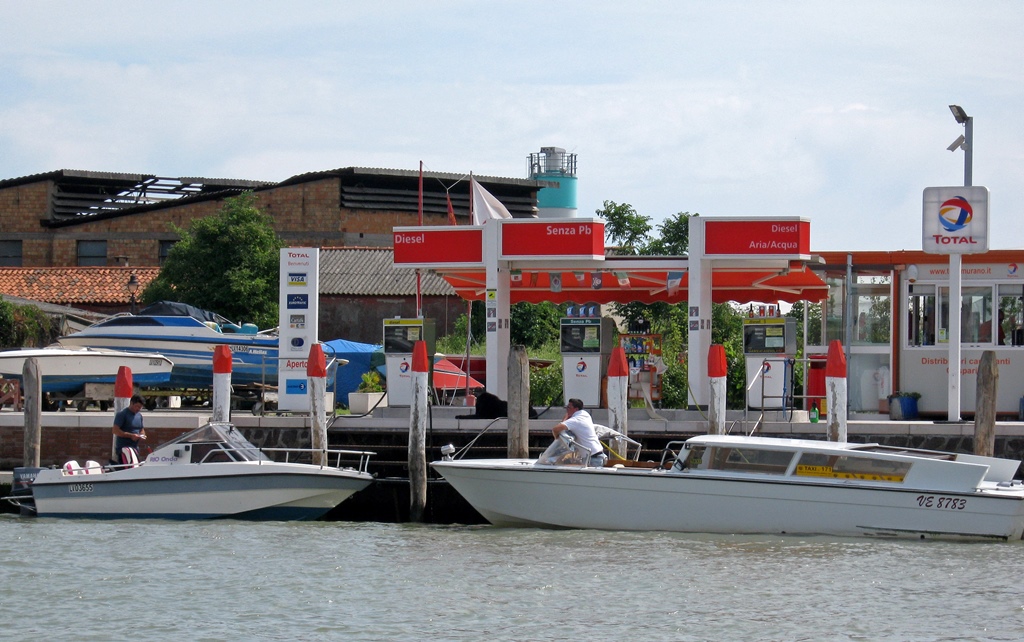
Gas Station, Murano
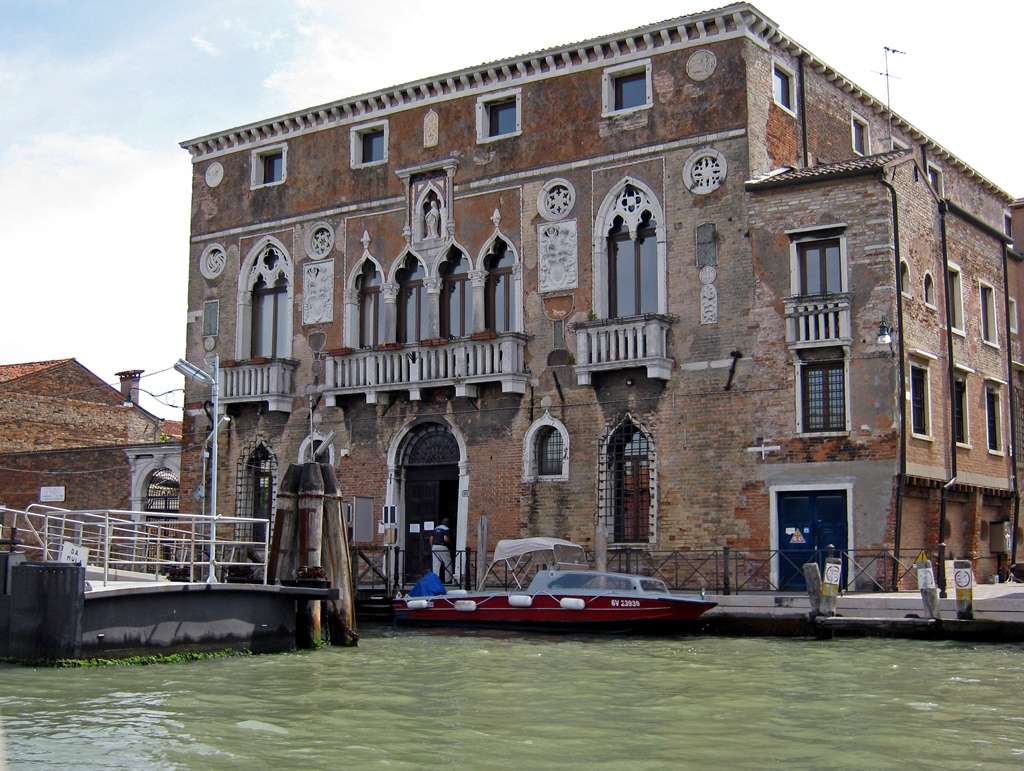
Building, Murano
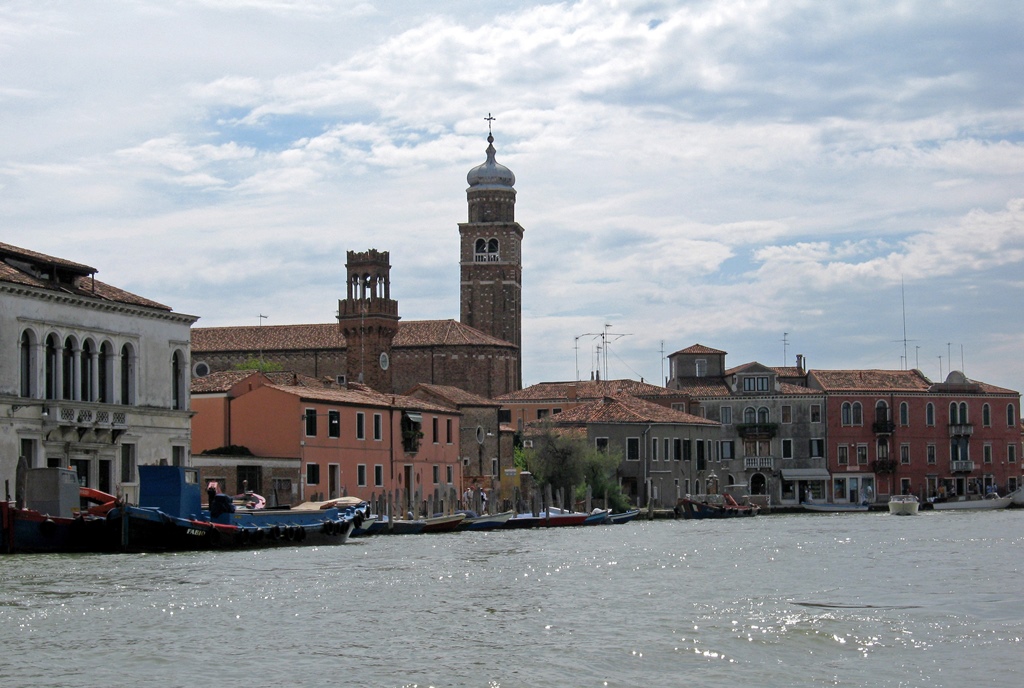
Buildings, Murano
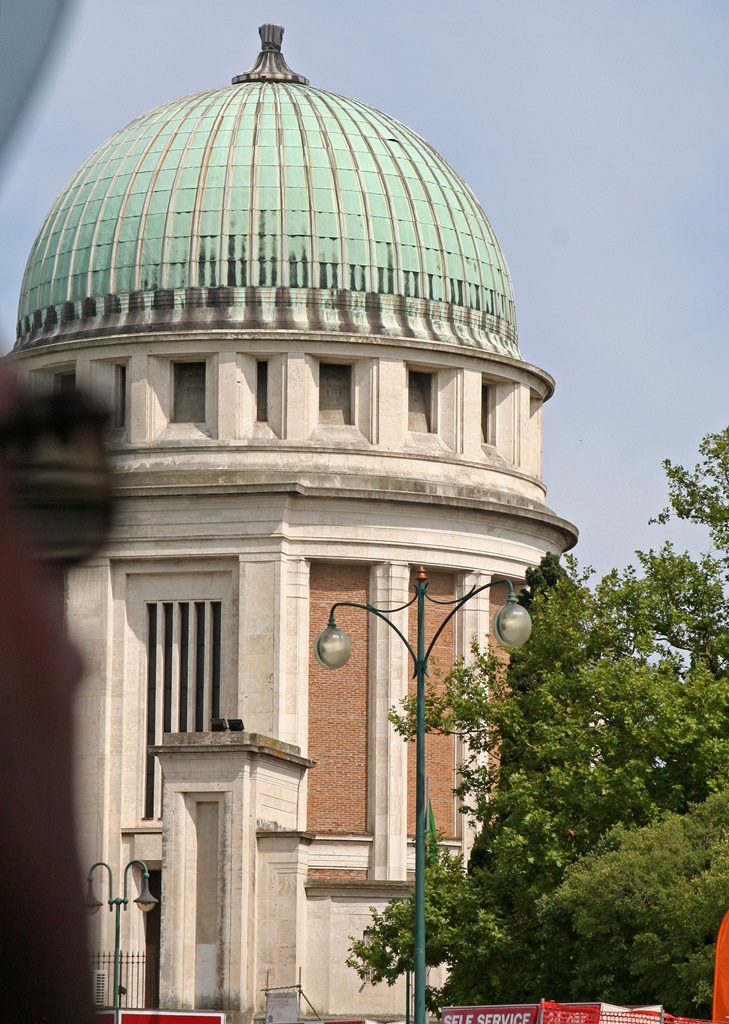
Votive Church of Santa Maria Elisabetta, Lido

Riding the Alilaguna
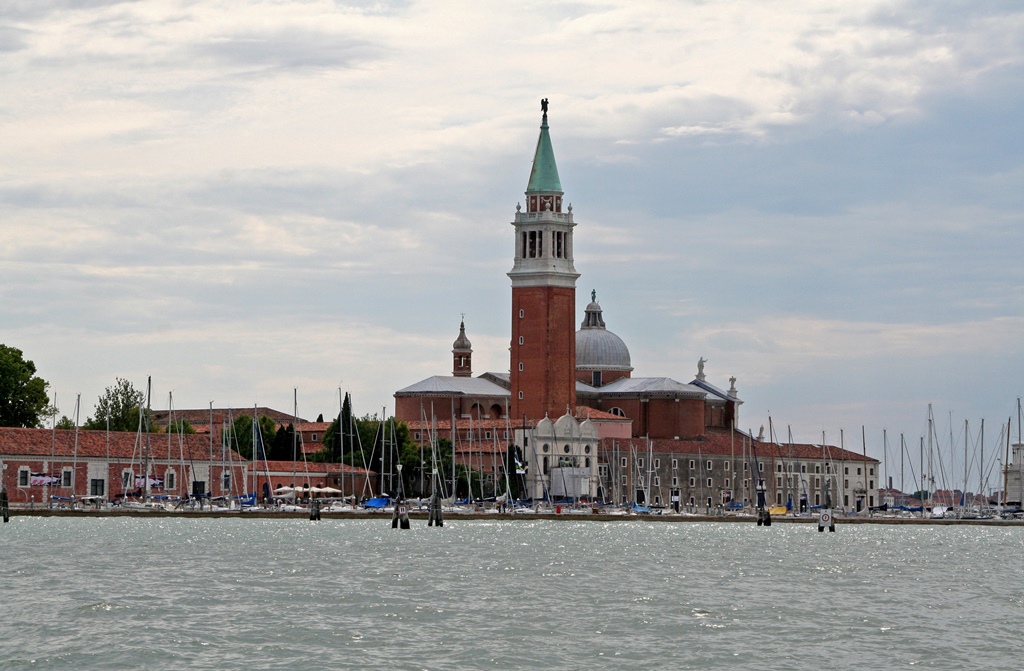
San Giorgio Maggiore
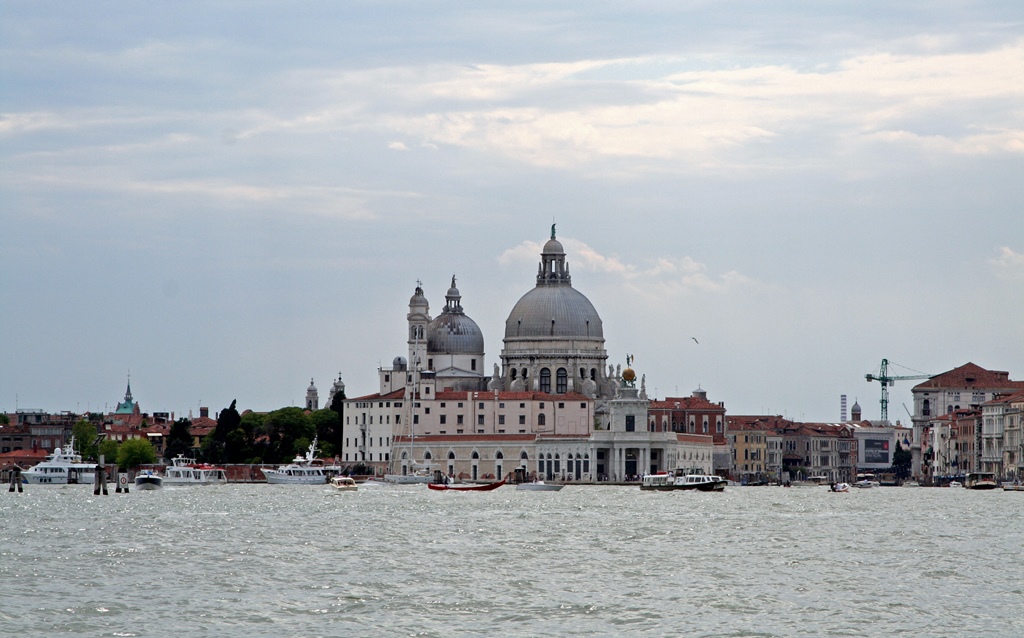
Santa Maria della Salute Church
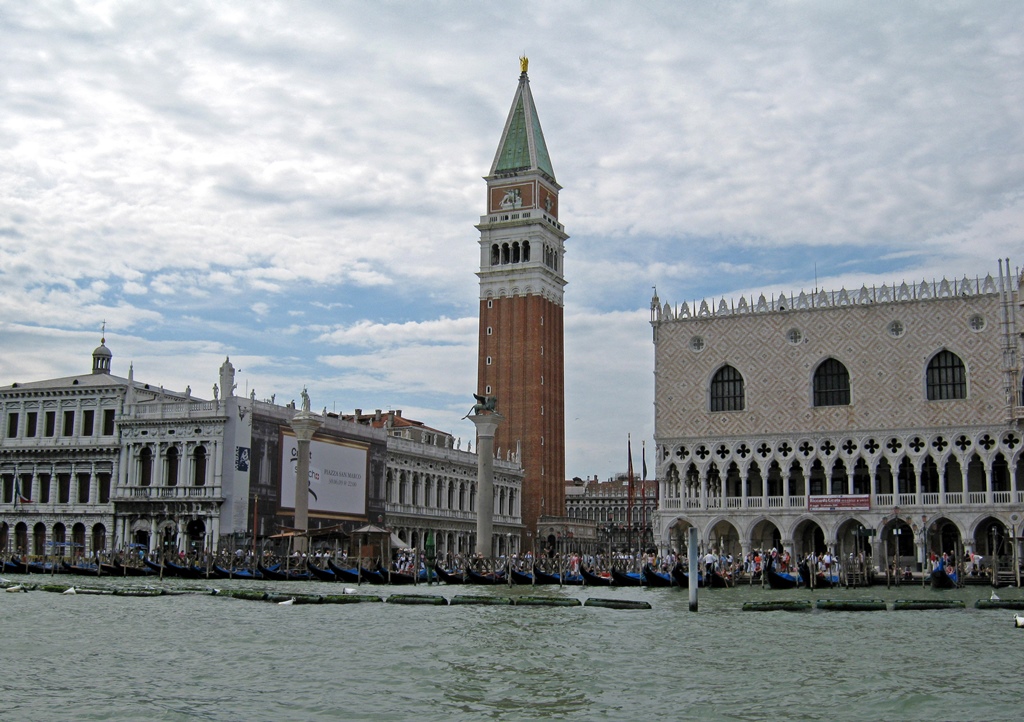
San Marco Area
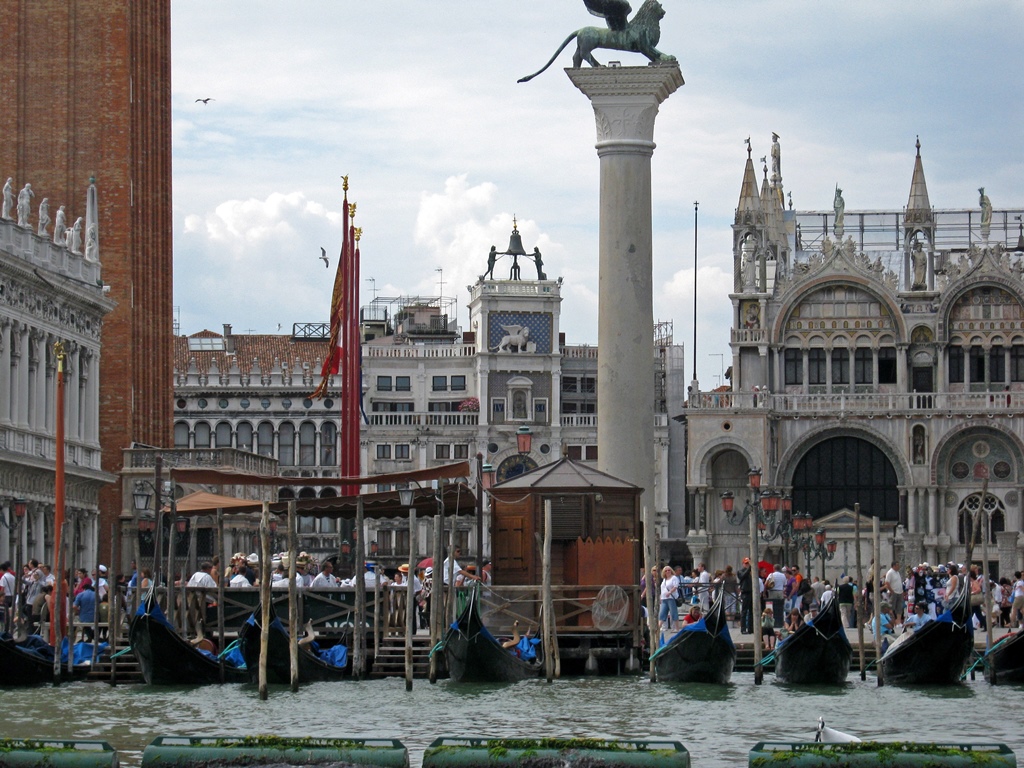
San Marco Area
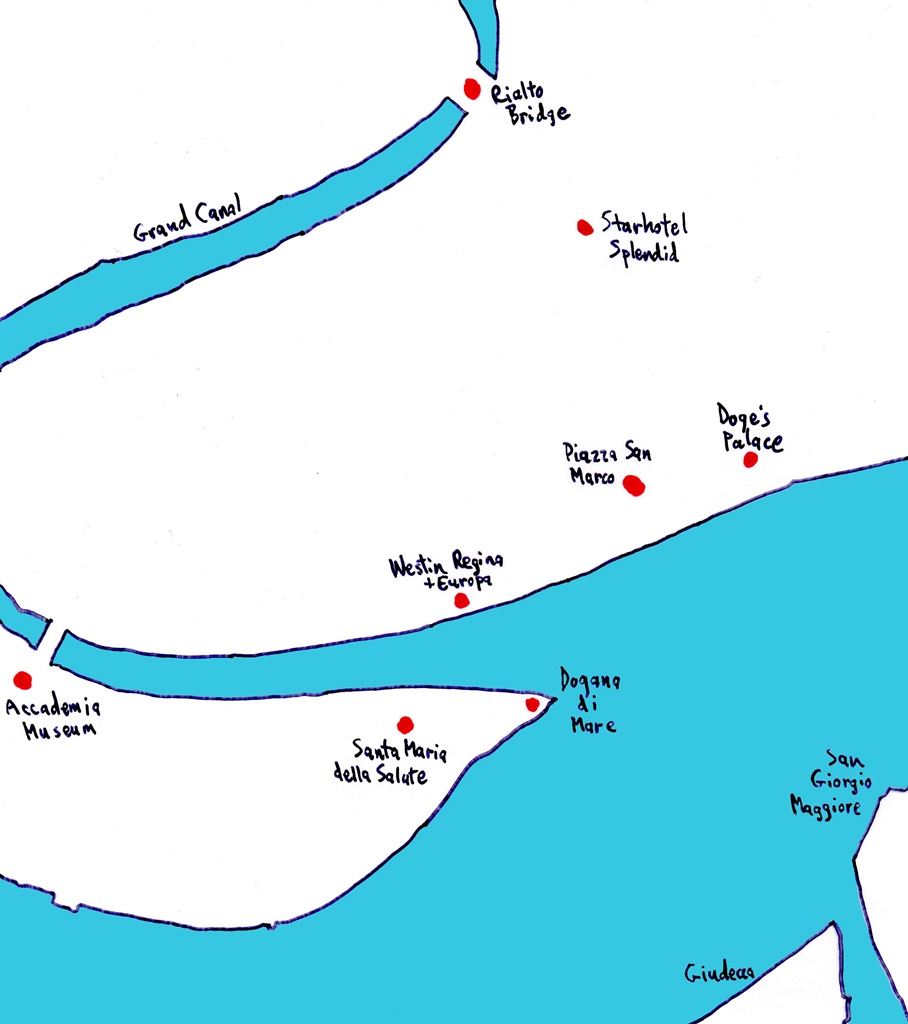
Venice Landmarks
On our map, the San Marco stop looked very close to our hotel, the Westin Europa &
Regina. Unfortunately, a small canal was in the way. One thing a visitor to Venice
quickly discovers is that the island is crisscrossed with numerous narrow canals,
and that bridges over them are often not located where one would like them to be.
When exploring, it's best to have a good map and pay close attention to where the
bridges are. We struck northward, away from the Grand Canal, and eventually found
a bridge that crossed the small canal between us and the hotel. Unfortunately,
there was no longer any sign of the hotel at this point, and no obvious way of
getting back to it. We dragged/carried our luggage along a crowded thoroughfare
lined with shops, and eventually noticed a small sign with the name of our hotel,
pointing into a narrow alley. We followed the alley, which seemed to go nowhere,
and after awhile found a perpendicular alley, which also seemed to go nowhere,
but which eventually dumped us into a small courtyard with the hotel entrance
forming one of its sides.
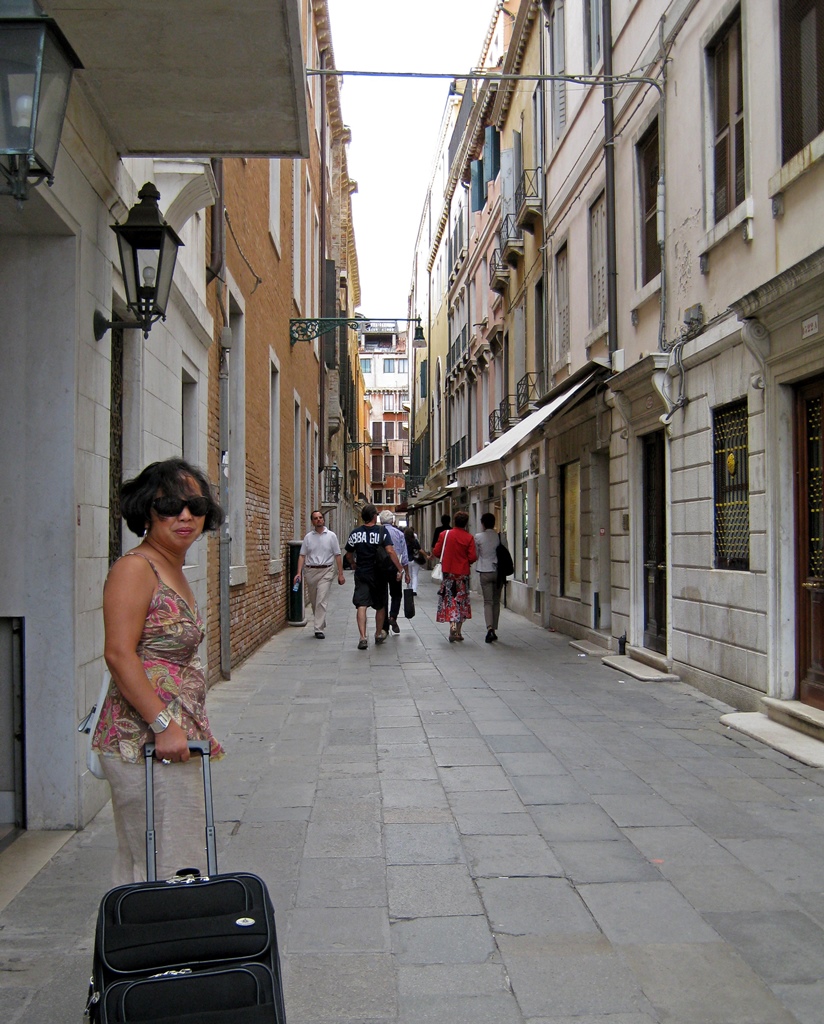
Now What?
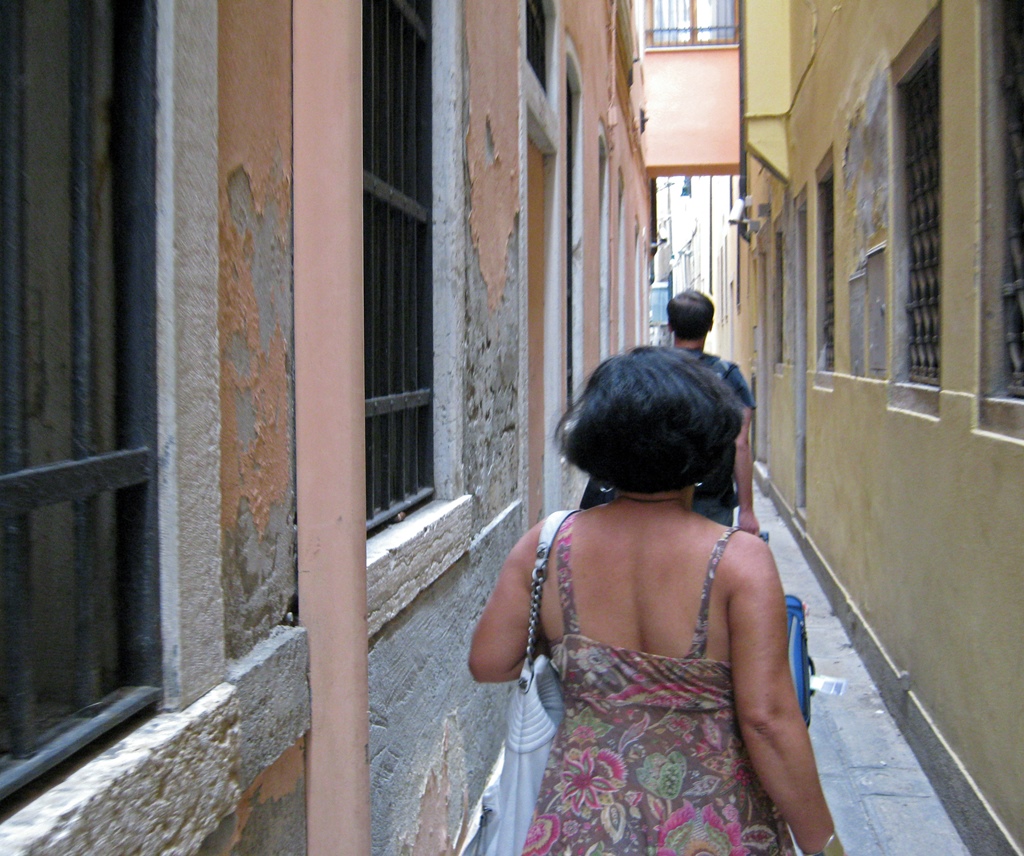
Down Here Maybe?
Westin Europa and Regina Hotel
Normally we wouldn't stay at a place like the Westin Europa & Regina, as it's very
nice but outside our price range, but we had some credit card points that made it
possible for us to stay for a few nights. Or two of us, anyway – there weren't any
available quad rooms, and they were pretty strict about trying to squeeze extra
people into the room. So Philip and Connie got a room of their own, in a different
hotel – the Starhotel Splendid, located between the Piazza San Marco and the
Rialto Bridge (more on these attractions later; for now, it suffices to say the
hotel wasn't very close to the Westin). We deposited the Bob and Nella luggage
into the Bob and Nella room at the Westin and dragged the rest all the way across
the Piazza San Marco and over to the Starhotel Splendid, which was slightly easier
to find than the Westin. Philip and Connie got checked into a small room which
they thought was wonderful, as it was someplace other than where their parents
were staying.
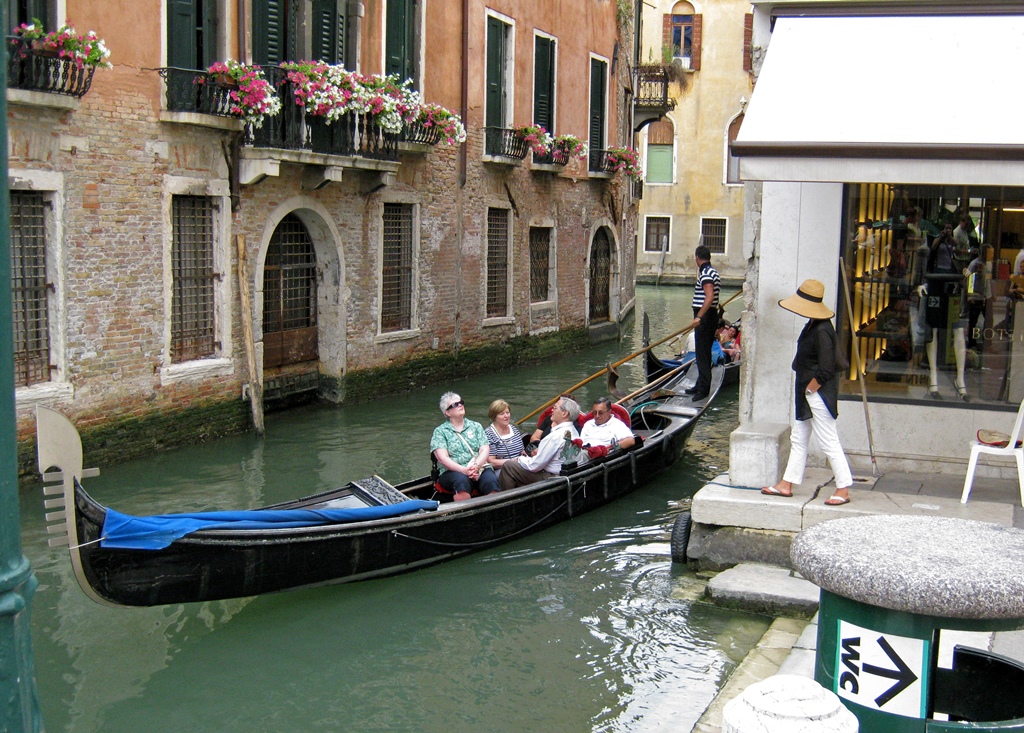
A Gondola
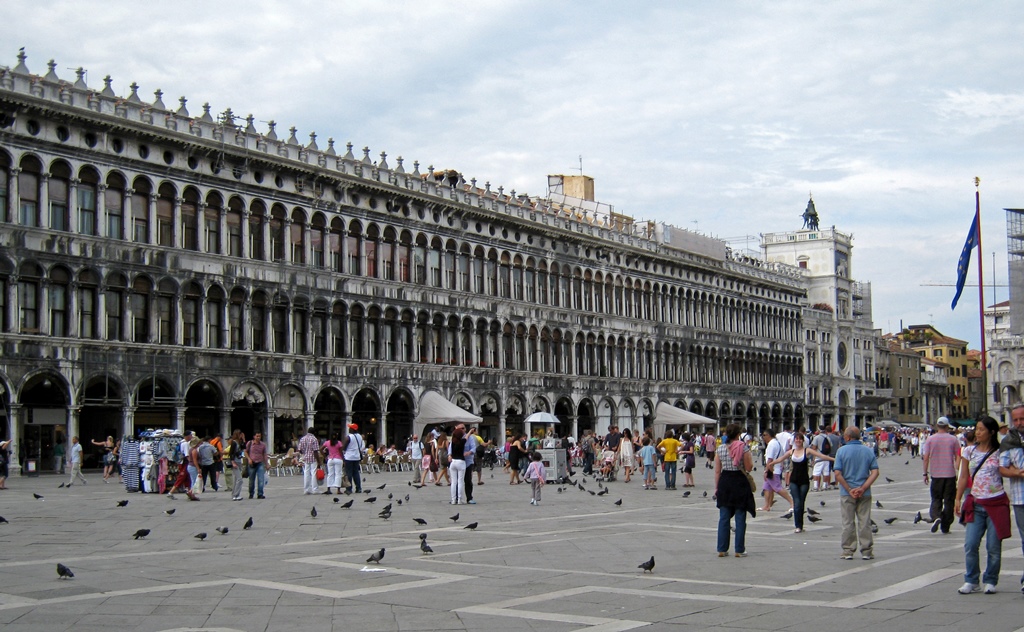
The Piazza San Marco

Crossing the Piazza
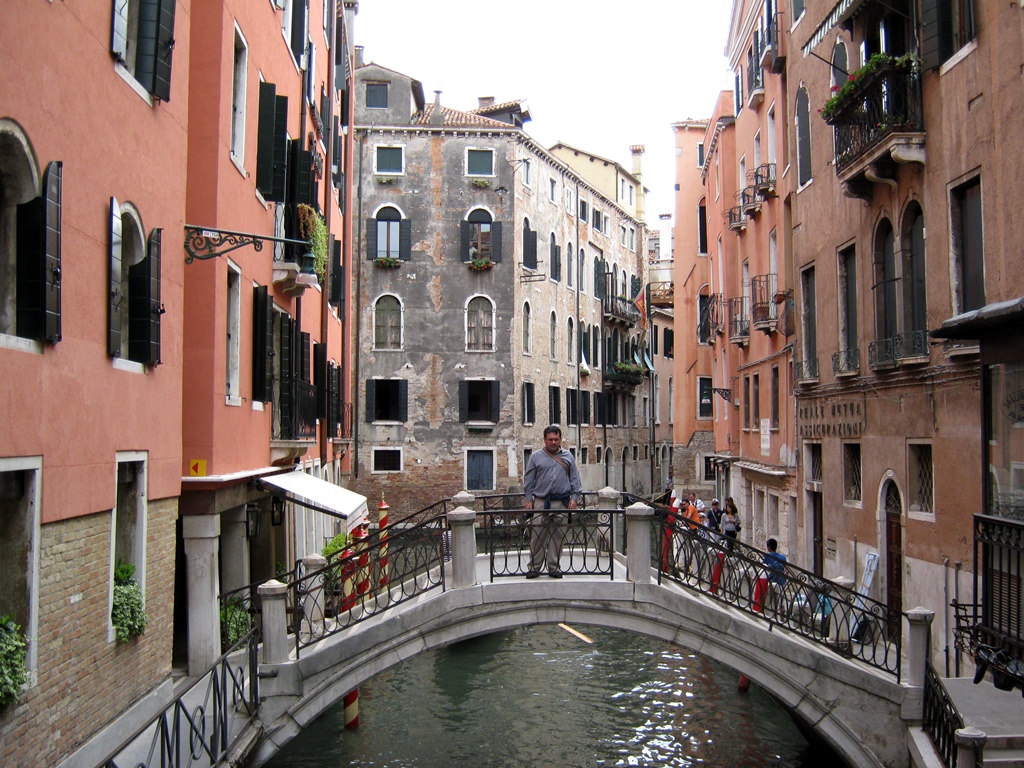
Bridge and Canal Near Hotel
The Starhotel Splendid
From the Starhotel Splendid, we continued north in search of food. This led us to the
Rialto Bridge, a shop-lined stone bridge which was completed in 1591, and which
crosses the Grand Canal near the geographic center of the island.
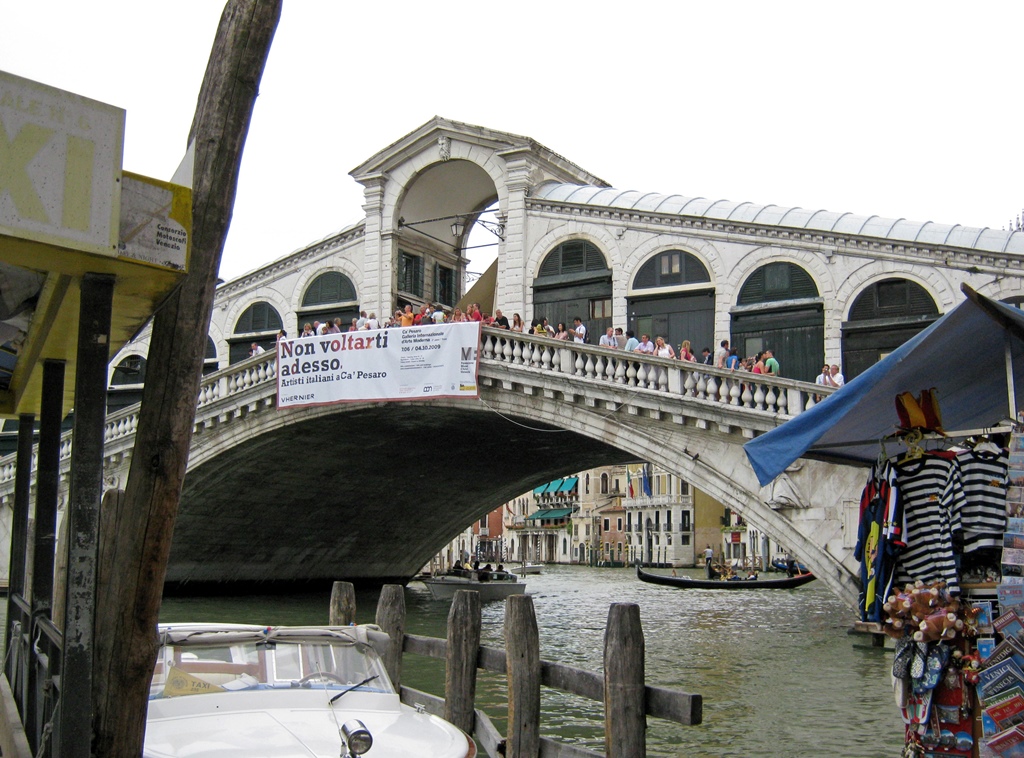
The Rialto Bridge
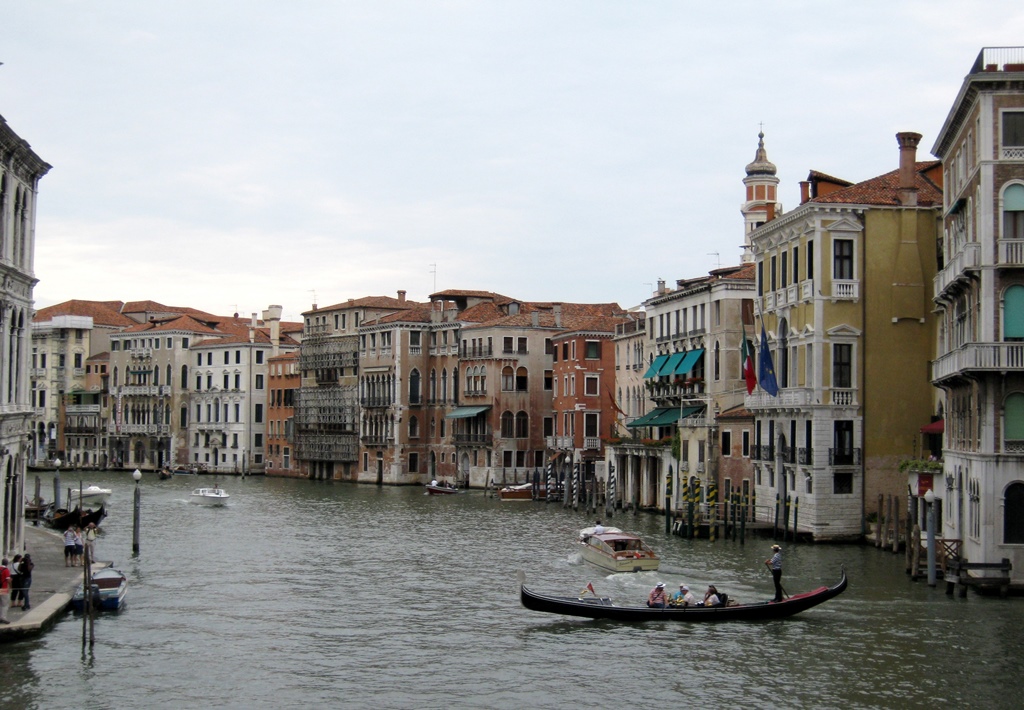
Grand Canal (North) from Bridge

Grand Canal (South) from Bridge
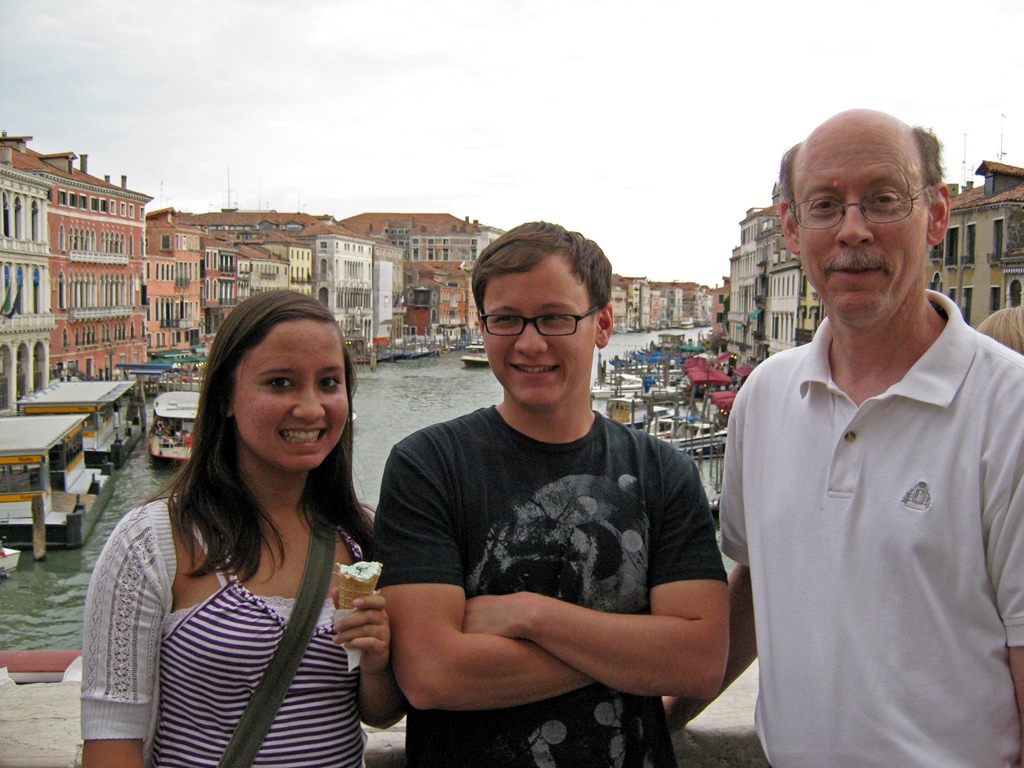
On the Rialto Bridge
North of the bridge we passed through an outdoor shopping area and eventually
found a promising restaurant which turned out to be closed until 7:30. So we
continued on until we found a reasonably-priced Chinese restaurant which was
open. It was a little weird being served by traditionally-clad Chinese waitresses
who were speaking Italian at us, but the food was very good.
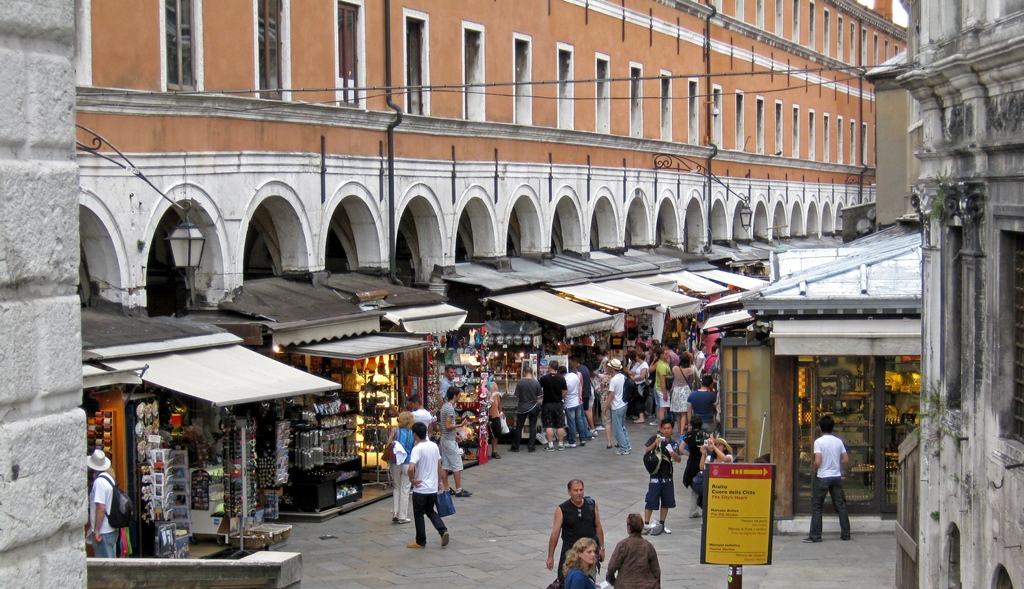
Shopping Area (Ruga degli Orefici)
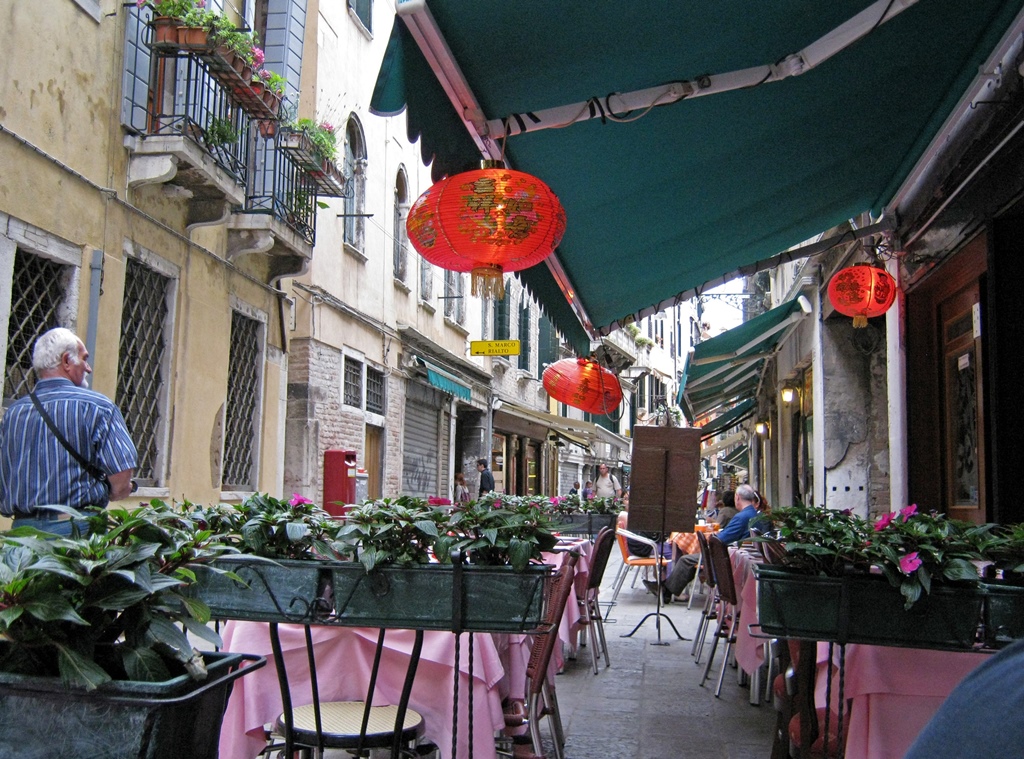
Chinese Restaurant
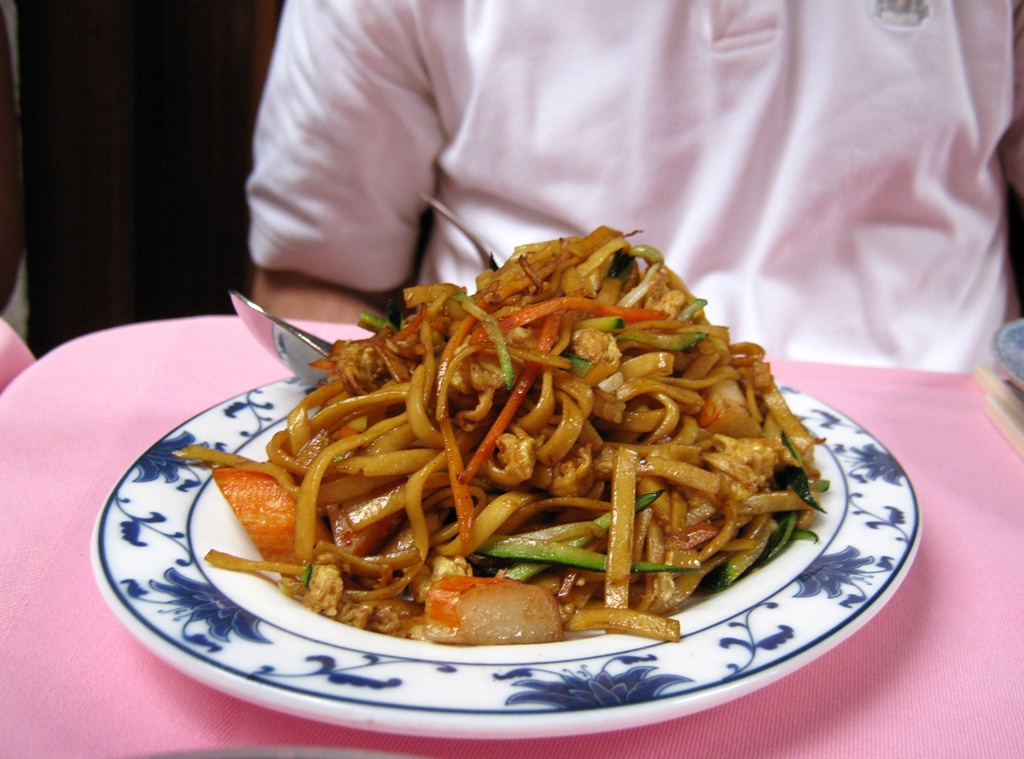
Chinese Food
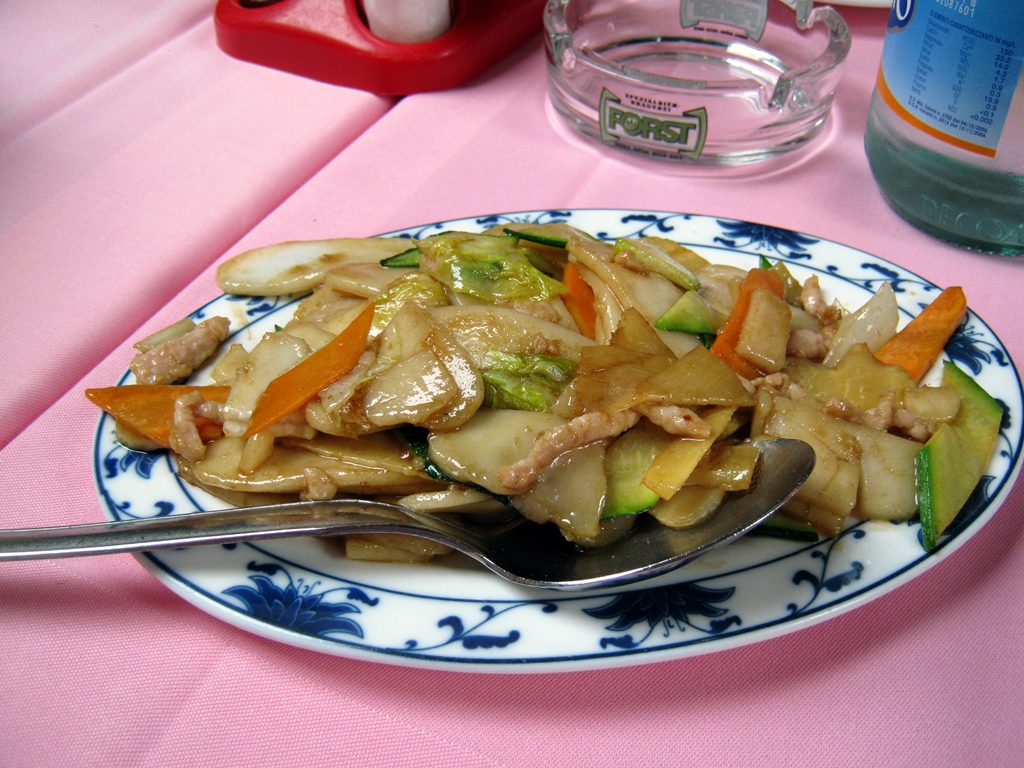
More Chinese Food
Venetian Chinese Restaurant
On the way back to the Starhotel Splendid, we stopped for dessert at a gelato
stand, and then stopped at a fruit stand to get some drinking water (don't touch
the minibars if you value your financial well-being) and some healthful snacks.
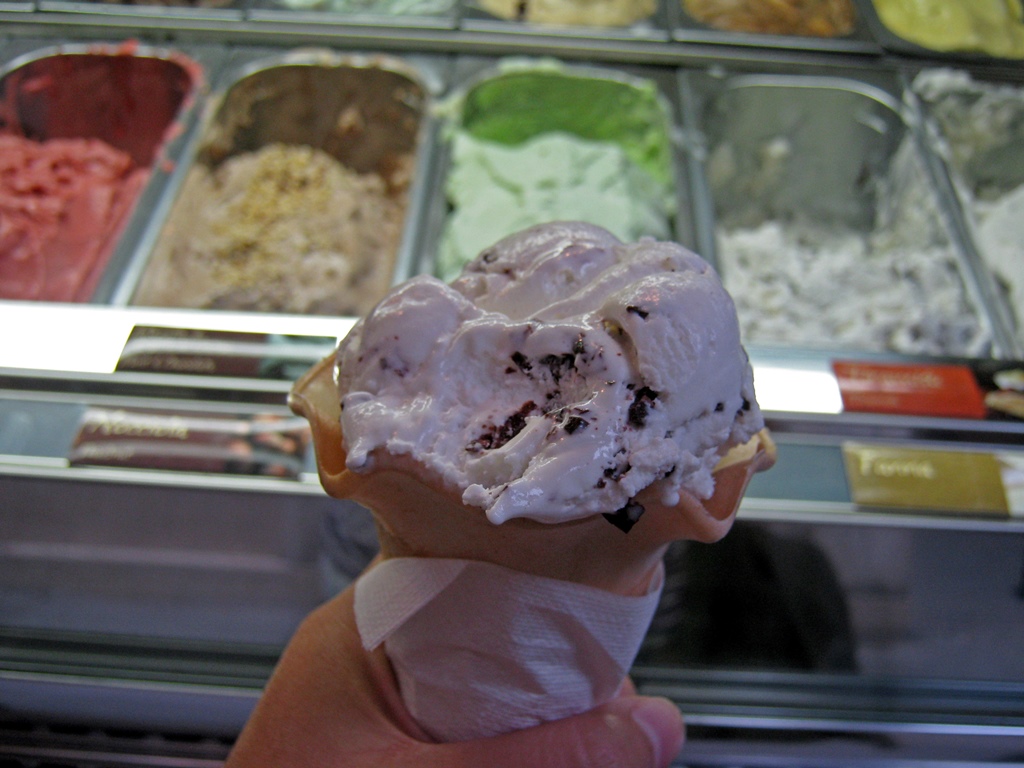
Gelato
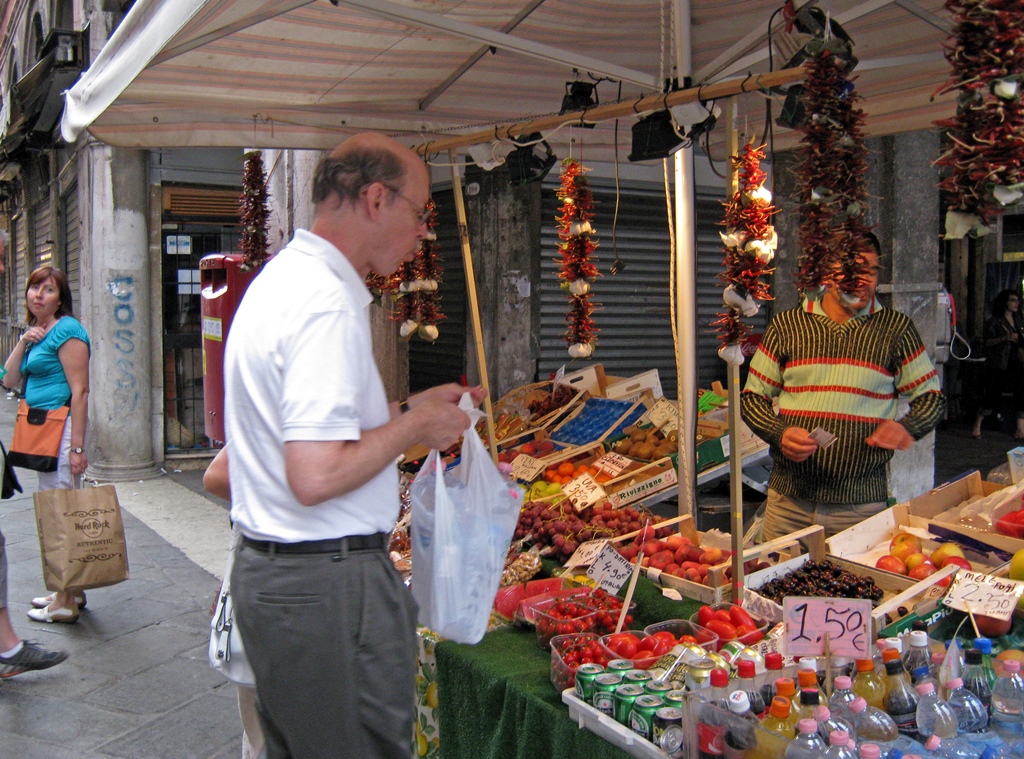
Fruit Stand
We then continued the long walk back to the Westin, dropping Philip and Connie off
at their hotel on the way. I think we were all ready for a break. And we needed
to rest up for the next day, which would be starting with St. Mark's Basilica.







